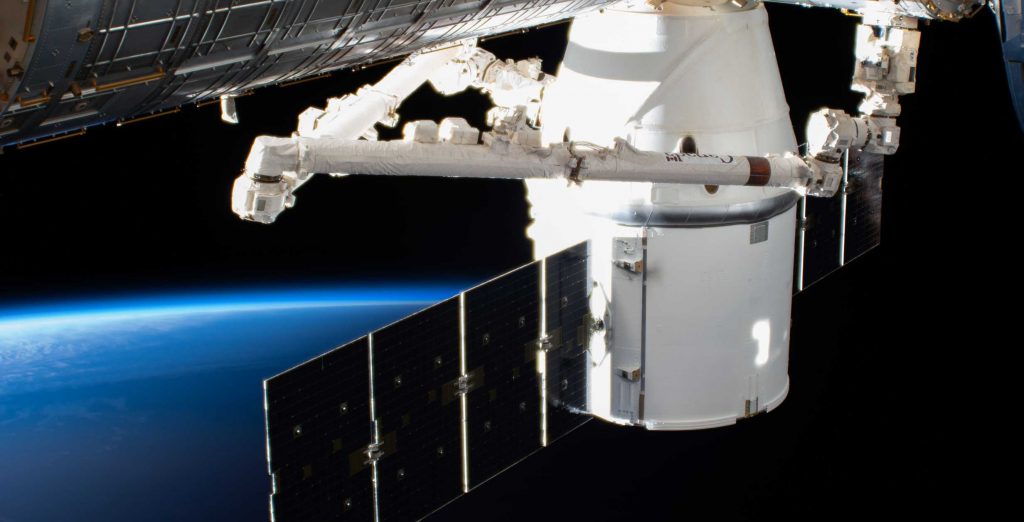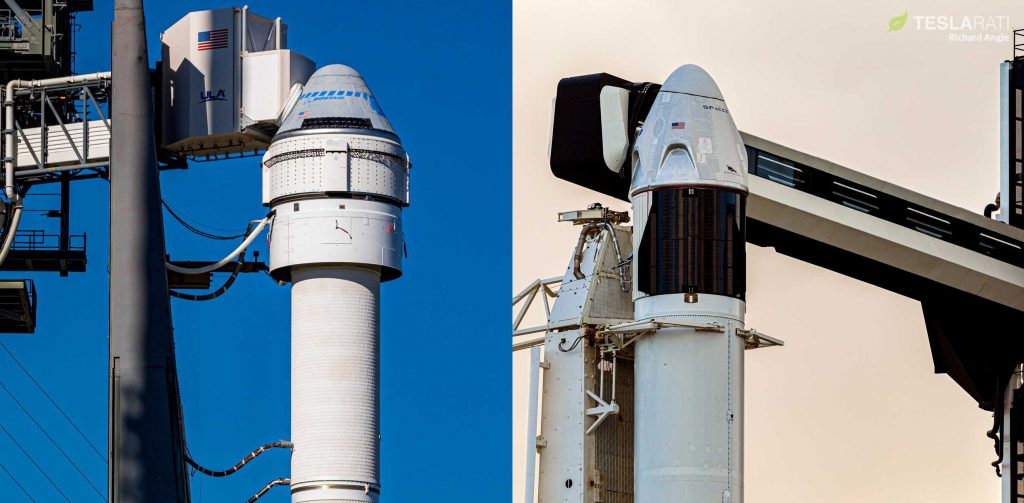

News
SpaceX’s second astronaut launch a step closer after NASA announcement
SpaceX’s second astronaut launch is a a step closer to flight after NASA and JAXA announced the third and fourth astronauts assigned to ride Crew Dragon to the International Space Station (ISS) on its first operational mission.
On the cusp of March 30th and 31st, the Japanese Space Agency (JAXA) made the first Crew Dragon-related announcement of the day, revealing the assignment of astronaut Soichi Noguchi to SpaceX’s Crew-1 launch. Hinging entirely on the success of SpaceX’s imminent Demo-2 astronaut launch debut, a critical demonstration mission scheduled to launch no earlier than mid-to-late May 2020, Crew Dragon’s Crew-1 mission will be the spacecraft’s first operational mission ferrying humans to and from the space station. NASA followed up JAXA’s announced hours later, revealing that astronaut Shannon Walker would be the fourth and final crew member aboard Crew Dragon’s Crew-1 launch.
Including Boeing’s Starliner and SpaceX’s Crew Dragon crewed demonstration missions, known as the Crewed Flight Test and Demonstration Mission 2 (Demo-2 or DM-2), respectively, NASA has purchased six astronaut launches from both providers. In theory, one Starliner and Crew Dragon launch per year – spaced out six or so months apart – should be enough to meet NASA’s space station transportation needs, meaning that the space agency’s 12 contracts should last until 2025 or 2026. Boeing’s Starliner appears to be delayed indefinitely after multiple near-catastrophic failures on its first Orbital Flight Test (OFT) but if SpaceX’s Demo-2 mission goes as planned, Crew Dragon could be set to enter operational duty as early as Q4 2020.

SpaceX’s Crew-1 mission manifest now includes NASA astronauts Mike Hopkins, Victor Glover, and Shannon Walker, as well as JAXA astronaut Soichi Noguchi and will likely carry an additional 100-200 kg (200-400 lb) of cargo to the International Space Station (ISS). While all eyes are reasonably on Crew Dragon’s Demo-2 mission, right now, the spacecraft’s Crew-1 through -5 missions are where SpaceX has the opportunity to gain extensive experience launching humans on an operational, semi-routine basis.
Making up at least half of the backbone of NASA’s new domestic astronaut launch capabilities, Crew Dragon and Falcon 9 will hopefully prove themselves to be as reliable and dependable as they and their predecessors have been over the years. Cargo Dragon, SpaceX’s first orbital-class spacecraft and the first private vehicle to visit the ISS, has successfully resupplied the space station and safely returned to Earth each of the 20 times the spacecraft reached orbit. Unsurprisingly, SpaceX ran into intermittent technical issues over those numerous flights, but all of those anomalies were solved on the fly and never prevented mission success or spacecraft recovery.

Falcon 9’s first in-flight failure destroyed the CRS-7 Cargo Dragon spacecraft in June 2015 and cut the mission short before it could reach orbit, but the failure was entirely unrelated to Dragon. Falcon 9’s second catastrophic failure occurred less than 15 months later, also a fault of a small but explosive rocket design flaw. From January 2017 to March 2020, however, Falcon 9 and Falcon Heavy rockets have completed 58 consecutively successful launches. With that streak of success, by certain measures, Falcon has become the most reliable operational rocket family in the world, tied with ULA’s famously reliable Atlas V and slightly better than Arianespace’s Ariane 5.
In short, while Cargo Dragon can’t hold a candle to the sheer scale of Russia’s Soyuz and Progress spacecraft flight histories, Falcon 9 is one of the two most reliable launch vehicles in operation and Crew Dragon will stand on the back of one of the most reliable spacecraft ever built in recent history. With (perhaps more than a little) luck, Boeing’s Starliner spacecraft – launched atop Atlas V, the other most reliable operational rocket – will hopefully be able to develop its own record of reliability in the next several years, but it will never be able to compete with the Cargo Dragon heritage Crew Dragon directly benefits from.

Boeing’s next Starliner mission is up in the air after the spacecraft’s almost disastrous orbital launch debut. Most likely, NASA will require a second uncrewed flight test, this time including the space station rendezvous, docking, and departure attempt Boeing had to cancel after Starliner’s major software failure. A second OFT would likely be ready for flight no earlier than Q3 or Q4 2020, depending on NASA’s investigation findings and requirements. If NASA remains confident and things go perfectly during the likely OFT2 mission, Starliner’s Crew Flight Test (CFT) could maybe launch by the end of 2020.
Crew Dragon’s Demo-2 astronaut launch debut is aiming for what NASA says is a mid-to-late May launch, although the mission is more likely to fly in the late-May to mid-June time frame. If Demo-2 launches on schedule (H1 2020) and is as flawless as Crew Dragon’s uncrewed Demo-1 launch debut, SpaceX could be ready to launch its second astronaut mission (Crew-1) as early as Q4 2020, possibly around the start of the quarter. With so much contingent on near-term reviews and tests, schedules beyond Demo-2 are unsurprisingly fluid.
Elon Musk
Tesla begins expanding Robotaxi access: here’s how you can ride
You can ride in a Tesla Robotaxi by heading to its website and filling out the interest form. The company is hand-picking some of those who have done this to gain access to the fleet.

Tesla has begun expanding Robotaxi access beyond the initial small group it offered rides to in late June, as it launched the driverless platform in Austin, Texas.
The small group of people enjoying the Robotaxi ride-hailing service is now growing, as several Austin-area residents are receiving invitations to test out the platform for themselves.
The first rides took place on June 22, and despite a very small number of very manageable and expected hiccups, Tesla Robotaxi was widely successful with its launch.
Tesla Robotaxi riders tout ‘smooth’ experience in first reviews of driverless service launch
However, Tesla is expanding the availability of the ride-hailing service to those living in Austin and its surrounding areas, hoping to gather more data and provide access to those who will utilize it on a daily basis.
Many of the people Tesla initially invited, including us, are not local to the Austin area.
There are a handful of people who are, but Tesla was evidently looking for more stable data collection, as many of those early invitees headed back to where they live.
The first handful of invitations in the second round of the Robotaxi platform’s Early Access Program are heading out to Austin locals:
I just got a @robotaxi invite! Super excited to go try the service out! pic.twitter.com/n9mN35KKFU
— Ethan McKanna (@ethanmckanna) July 1, 2025
Tesla likely saw an influx of data during the first week, as many traveled far and wide to say they were among the first to test the Robotaxi platform.
Now that the first week and a half of testing is over, Tesla is expanding invites to others. Many of those who have been chosen to gain access to the Robotaxi app and the ride-hailing service state that they simply filled out the interest form on the Robotaxi page of Tesla’s website.
That’s the easiest way you will also gain access, so be sure to fill out that form if you have any interest in riding in Robotaxi.
Tesla will continue to utilize data accumulated from these rides to enable more progress, and eventually, it will lead to even more people being able to hail rides from the driverless platform.
With more success, Tesla will start to phase out some of the Safety Monitors and Supervisors it is using to ensure things run smoothly. CEO Elon Musk said Tesla could start increasing the number of Robotaxis to monitors within the next couple of months.
Elon Musk
Tesla analyst issues stern warning to investors: forget Trump-Musk feud

A Tesla analyst today said that investors should not lose sight of what is truly important in the grand scheme of being a shareholder, and that any near-term drama between CEO Elon Musk and U.S. President Donald Trump should not outshine the progress made by the company.
Gene Munster of Deepwater Management said that Tesla’s progress in autonomy is a much larger influence and a significantly bigger part of the company’s story than any disagreement between political policies.
Munster appeared on CNBC‘s “Closing Bell” yesterday to reiterate this point:
“One thing that is critical for Tesla investors to remember is that what’s going on with the business, with autonomy, the progress that they’re making, albeit early, is much bigger than any feud that is going to happen week-to-week between the President and Elon. So, I understand the reaction, but ultimately, I think that cooler heads will prevail. If they don’t, autonomy is still coming, one way or the other.”
BREAKING: GENE MUNSTER SAYS — $TSLA AUTONOMY IS “MUCH BIGGER” THAN ANY FEUD 👀
He says robotaxis are coming regardless ! pic.twitter.com/ytpPcwUTFy
— TheSonOfWalkley (@TheSonOfWalkley) July 2, 2025
This is a point that other analysts like Dan Ives of Wedbush and Cathie Wood of ARK Invest also made yesterday.
On two occasions over the past month, Musk and President Trump have gotten involved in a very public disagreement over the “Big Beautiful Bill,” which officially passed through the Senate yesterday and is making its way to the House of Representatives.
Musk is upset with the spending in the bill, while President Trump continues to reiterate that the Tesla CEO is only frustrated with the removal of an “EV mandate,” which does not exist federally, nor is it something Musk has expressed any frustration with.
In fact, Musk has pushed back against keeping federal subsidies for EVs, as long as gas and oil subsidies are also removed.
Nevertheless, Ives and Wood both said yesterday that they believe the political hardship between Musk and President Trump will pass because both realize the world is a better place with them on the same team.
Munster’s perspective is that, even though Musk’s feud with President Trump could apply near-term pressure to the stock, the company’s progress in autonomy is an indication that, in the long term, Tesla is set up to succeed.
Tesla launched its Robotaxi platform in Austin on June 22 and is expanding access to more members of the public. Austin residents are now reporting that they have been invited to join the program.
Elon Musk
Tesla surges following better-than-expected delivery report
Tesla saw some positive momentum during trading hours as it reported its deliveries for Q2.

Tesla (NASDAQ: TSLA) surged over four percent on Wednesday morning after the company reported better-than-expected deliveries. It was nearly right on consensus estimations, as Wall Street predicted the company would deliver 385,000 cars in Q2.
Tesla reported that it delivered 384,122 vehicles in Q2. Many, including those inside the Tesla community, were anticipating deliveries in the 340,000 to 360,000 range, while Wall Street seemed to get it just right.
Tesla delivers 384,000 vehicles in Q2 2025, deploys 9.6 GWh in energy storage
Despite Tesla meeting consensus estimations, there were real concerns about what the company would report for Q2.
There were reportedly brief pauses in production at Gigafactory Texas during the quarter and the ramp of the new Model Y configuration across the globe were expected to provide headwinds for the EV maker during the quarter.
At noon on the East Coast, Tesla shares were up about 4.5 percent.
It is expected that Tesla will likely equal the number of deliveries it completed in both of the past two years.
It has hovered at the 1.8 million mark since 2023, and it seems it is right on pace to match that once again. Early last year, Tesla said that annual growth would be “notably lower” than expected due to its development of a new vehicle platform, which will enable more affordable models to be offered to the public.
These cars are expected to be unveiled at some point this year, as Tesla said they were “on track” to be produced in the first half of the year. Tesla has yet to unveil these vehicle designs to the public.
Dan Ives of Wedbush said in a note to investors this morning that the company’s rebound in China in June reflects good things to come, especially given the Model Y and its ramp across the world.
He also said that Musk’s commitment to the company and return from politics played a major role in the company’s performance in Q2:
“If Musk continues to lead and remain in the driver’s seat, we believe Tesla is on a path to an accelerated growth path over the coming years with deliveries expected to ramp in the back-half of 2025 following the Model Y refresh cycle.”
Ives maintained his $500 price target and the ‘Outperform’ rating he held on the stock:
“Tesla’s future is in many ways the brightest it’s ever been in our view given autonomous, FSD, robotics, and many other technology innovations now on the horizon with 90% of the valuation being driven by autonomous and robotics over the coming years but Musk needs to focus on driving Tesla and not putting his political views first. We maintain our OUTPERFORM and $500 PT.”
Moving forward, investors will look to see some gradual growth over the next few quarters. At worst, Tesla should look to match 2023 and 2024 full-year delivery figures, which could be beaten if the automaker can offer those affordable models by the end of the year.
-

 Elon Musk2 days ago
Elon Musk2 days agoTesla investors will be shocked by Jim Cramer’s latest assessment
-

 News1 week ago
News1 week agoTesla Robotaxi’s biggest challenge seems to be this one thing
-

 Elon Musk2 weeks ago
Elon Musk2 weeks agoElon Musk slams Bloomberg’s shocking xAI cash burn claims
-

 News2 weeks ago
News2 weeks agoTexas lawmakers urge Tesla to delay Austin robotaxi launch to September
-

 Elon Musk1 week ago
Elon Musk1 week agoFirst Look at Tesla’s Robotaxi App: features, design, and more
-

 Elon Musk2 weeks ago
Elon Musk2 weeks agoTesla Robotaxis are becoming a common sight on Austin’s public roads
-

 Elon Musk2 weeks ago
Elon Musk2 weeks agoxAI’s Grok 3 partners with Oracle Cloud for corporate AI innovation
-

 Elon Musk2 weeks ago
Elon Musk2 weeks agoSpaceX President meets India Minister after Starlink approval

















